Disclosure: This article contains affiliate links. We may earn a commission from purchases at no extra cost to you, which helps our travel content.
The sensory overload of Marrakech hits you like the first moments in an emergency room – chaotic, intense, and demanding your complete attention. Yet unlike the ER, this controlled chaos is precisely what makes Morocco's Red City so captivating. After five visits spanning nearly two decades, I've developed what I call my 'Marrakech Protocol' – a systematic approach to experiencing this magnificent city beyond the tourist circuit. My first visit in 2006 was a disaster of tourist traps and overpriced souvenirs. Now, having spent cumulative months navigating its labyrinthine medina and forging connections with locals, I've compiled these insider secrets specifically for couples seeking an authentic Moroccan experience without breaking the bank. Fall offers the perfect climate equilibrium – warm days for exploration and cool evenings for romantic rooftop dinners under star-filled skies. Whether you're seeking cultural immersion or a respite from the professional grind, these 12 insider secrets will transform your Marrakech experience from ordinary to extraordinary.
Navigate the Medina Like a Local
Forget Google Maps in Marrakech's ancient medina – it's about as useful as a stethoscope at a cooking class. The 9th-century walled city center operates on an entirely different navigational system that confounds even the most directionally gifted travelers.
During my second visit in 2011, I became hopelessly lost despite considering myself an experienced traveler. The breakthrough came when a shopkeeper named Hassan taught me to navigate by landmarks rather than street names. The locals use a system of mental waypoints – distinctive doors, unusual shops, or specific turns – creating mental algorithms similar to how we memorize complex medical procedures.
Start by identifying major landmarks like the Koutoubia Mosque (visible from most places) and Jemaa el-Fnaa square. Then, build your mental map outward with secondary landmarks. I recommend carrying a small pocket notebook to sketch your route and note distinctive markers.
When inevitably disoriented, approach shopkeepers rather than 'helpful' strangers who may demand payment for directions. The phrase 'Shukran, ana nadhur faqat' (Thank you, I'm just looking) will politely deflect persistent vendors. If truly lost, duck into a café, order mint tea, and reset your bearings – a medical technique I call 'controlled recalibration' that works equally well in chaotic environments.
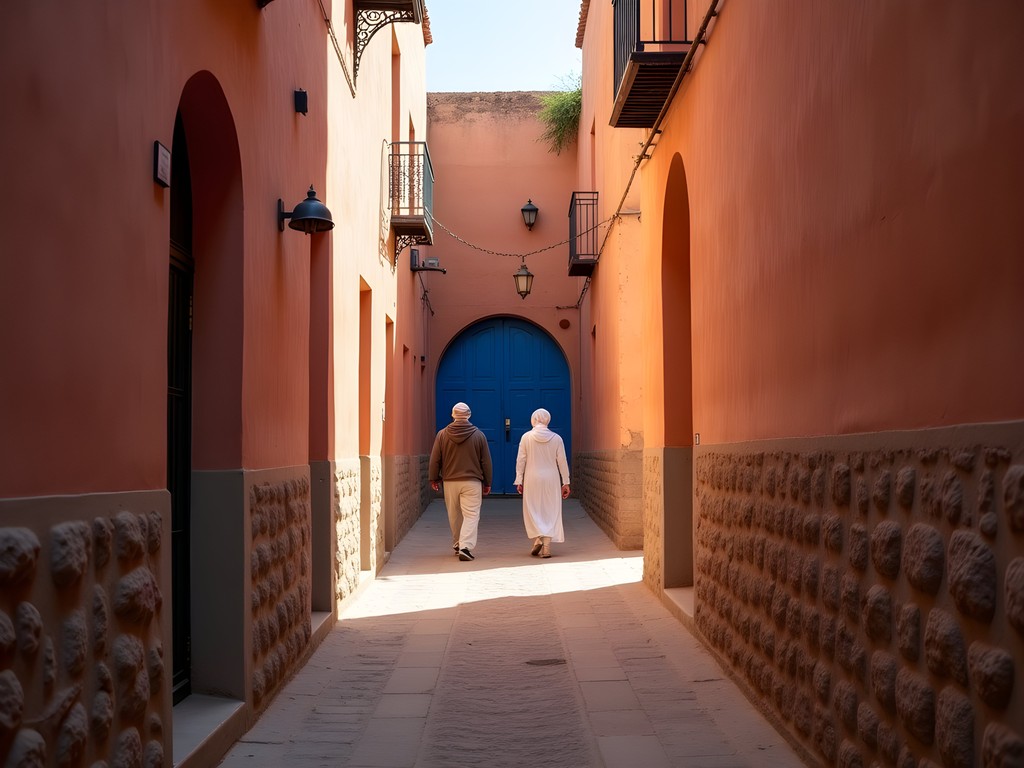
💡 Pro Tips
- Learn 5-10 basic Arabic or French phrases – locals appreciate the effort and will be more likely to assist you genuinely
- Wear comfortable but respectful clothing – I recommend closed-toe shoes with good support for the uneven terrain
- Photograph distinctive doorways or signs near your riad to help find your way back
Riad Selection: Beyond the Instagram Façade
The difference between a tourist-trap riad and an authentic gem often comes down to location and ownership. After staying in 14 different riads across my visits, I've developed a systematic approach to selection that mirrors how I evaluate treatment options in the ER – evidence-based and outcome-focused.
First, avoid the heavily touristed areas near Jemaa el-Fnaa. Instead, focus on neighborhoods like Kasbah, Bab Doukkala, or my personal favorite, Mouassine. These areas offer authentic local life while remaining accessible.
Second, prioritize locally-owned riads over international chains or influencer hotspots. My most memorable stays have been in family-operated establishments where the owners share generations of local knowledge. Riad Dar Tayib in the northern medina exemplifies this – the owner Youssef's family has operated it for three generations, and his mother still prepares breakfast daily using recipes passed through generations.
Third, don't be seduced by lavish online photos alone. I've found inverse correlation between photogenic pools and authentic experiences. The most memorable stays often feature modest accommodations but exceptional hospitality. Email potential riads directly with specific questions about the neighborhood and family history – the quality of response reveals much about the experience you'll have.
Finally, request a room away from the central courtyard if you're a light sleeper. The acoustics of traditional riads amplify sounds, and while the morning calls to prayer are a cultural experience worth having, other guests' late-night conversations are not.
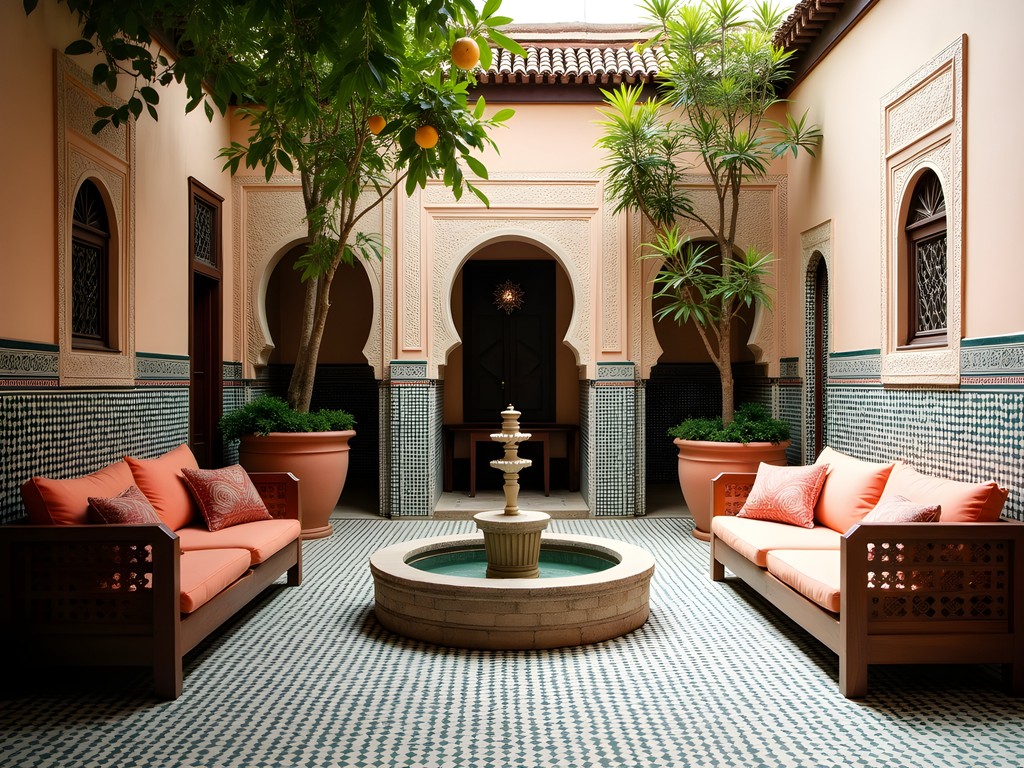
💡 Pro Tips
- Book directly with riads when possible – they'll often offer better rates than booking sites
- Request airport transfers through your riad – they'll arrange reliable drivers who know how to navigate the medina's restricted vehicle areas
- Ask about roof access – many riads have terraces perfect for private sunset views
Culinary Immersion: Beyond Tagine Tourism
Moroccan cuisine operates like a well-designed clinical trial – complex, methodical, and yielding consistently excellent results when done properly. Unfortunately, most tourists experience only simplified versions in restaurants catering to foreign palates.
My culinary epiphany came during my third visit when I enrolled in a cooking class not in a tourist center, but in the home of a local family. The difference was revelatory – like comparing a textbook description of a procedure to performing it under the guidance of an experienced physician.
Aisha's Kitchen, hidden in the Bab Doukkala neighborhood, offers the most authentic cooking experience I've found. Unlike commercial schools, Aisha teaches in her family home where techniques have been passed down for generations. Her tajine preparation involves 23 distinct steps and specialized equipment including a clay tagine pot that's been seasoned over decades of use.
Beyond cooking classes, seek out specific local specialties that rarely appear on tourist menus. Tanjia Marrakchia – slow-cooked meat prepared in clay urns and buried in hot ashes at the hammam – represents Marrakech's unique culinary contribution to Moroccan cuisine. Ask your riad host where workers eat tanjia for lunch, as these establishments serve the most authentic versions.
For couples, I recommend the evening food tour through the Mellah (Jewish Quarter) where you'll discover bakeries producing traditional breads, herbalists blending unique spice combinations, and communal ovens where families bring their prepared dishes for baking. The sensory experience – aromas of cumin and cinnamon, the visual symphony of spice pyramids, the tactile pleasure of kneading bread dough – creates shared memories that transcend typical tourist experiences.
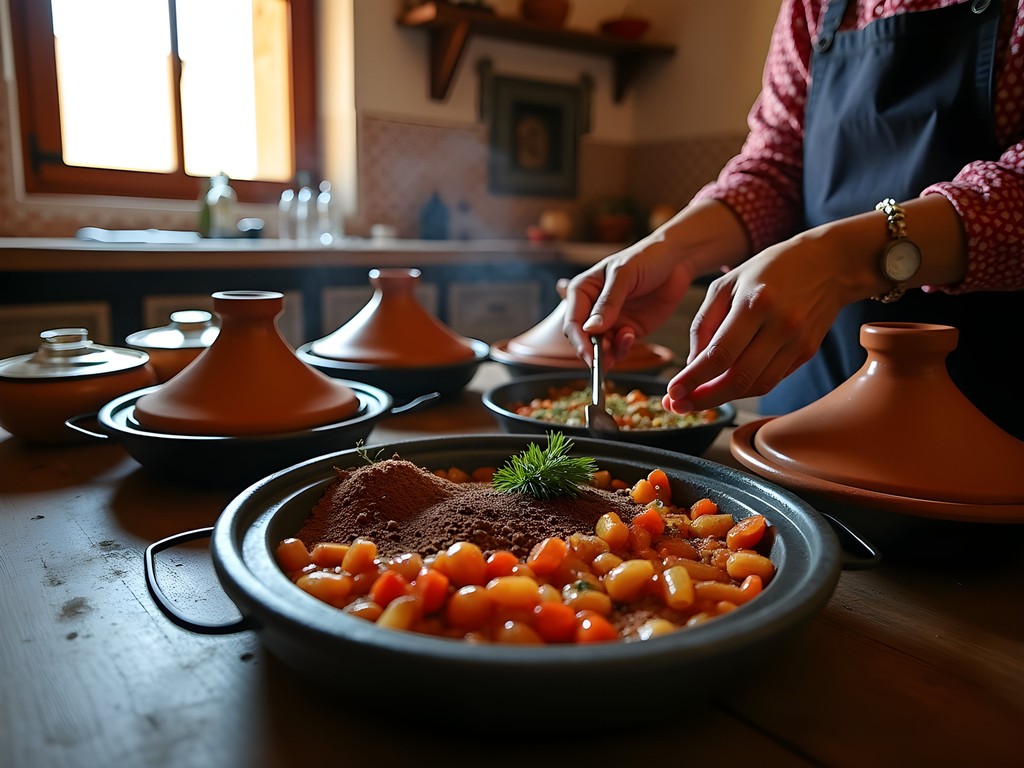
💡 Pro Tips
- Visit markets early (7-8am) when locals shop and prices haven't adjusted for tourists
- Learn the phrase 'bghrit ghir nchouf ataman' (I just want to see the price) before negotiating
- Ask specifically for 'msemmen' – a flaky, layered bread rarely served to tourists but available at most bakeries
Strategic Shopping: The Outlet Approach to Souks
The souks of Marrakech operate on principles similar to emergency triage – overwhelming at first glance but governed by logical systems once you understand the underlying organization. After countless hours navigating these commercial labyrinths, I've developed what I call the 'Outlet Strategy' – applying the same methodical approach I use at premium outlets to Marrakech's traditional markets.
First, understand the geographic specialization. The souks are organized by product category: metalworkers in one section, leather goods in another, textiles in yet another. This organization dates back centuries and allows for targeted shopping rather than aimless wandering.
Second, timing is crucial. Shop between 8-10am when merchants are making their first sales of the day (considered lucky) or after 4pm when they're eager to meet daily quotas. Avoid midday when cruise ship and tour bus crowds arrive.
For authentic artisanal goods, venture beyond the central souks to Sidi Youssef Ben Ali district, where many actual workshops operate. Here, you'll find craftspeople creating items rather than merely selling them. My prized possession, a hand-carved calligraphy pen made from Moroccan olive wood, came from a small workshop where I watched the entire creation process.
For textiles, the cooperative workshops in the Ensemble Artisanal offer fixed prices (no haggling) and direct support to artisans. While slightly more expensive than souk prices, the quality control and ethical sourcing justify the premium – similar to choosing evidence-based treatments over unproven alternatives.
When haggling is appropriate, my physician's approach serves me well: remain calm, friendly but firm, and willing to walk away. Start at approximately 40% of the asking price and don't exceed 60% for fair value. Remember that an enjoyable negotiation often results in better prices than an adversarial one.

💡 Pro Tips
- Photograph nothing without permission – many craftspeople fear design theft and will react negatively
- Carry small denominations of dirhams in different pockets to avoid displaying your full cash supply
- Learn the phrase 'la shukran' (no thank you) and deliver it with a smile but firm tone
Cultural Connection Through Calligraphy
My passion for calligraphy has created unexpected bridges across cultures, particularly in Morocco where the art form holds profound cultural significance. The precision required mirrors aspects of medical practice – each stroke matters, corrections are difficult, and the process demands full attention.
On my fourth visit to Marrakech, I discovered the Madrasa Ben Youssef offered weekly calligraphy workshops led by master calligrapher Mohammed Charqaoui. These sessions, primarily attended by locals, provide insight into Islamic artistic traditions rarely accessible to tourists.
The workshop begins with preparation of traditional materials – reed pens (qalam) and homemade ink derived from natural sources. Mohammed emphasizes that calligraphy is not merely writing but spiritual practice, each letter a meditation. For beginners, he recommends starting with a quality calligraphy starter kit to practice basic techniques before investing in specialized tools.
Beyond formal classes, seek out the small calligraphy shops in the northern medina where artisans create personalized works. My most treasured souvenir is a custom piece incorporating my name in Arabic script alongside a traditional Berber symbol – a tangible connection between cultures that hangs in my Reno home.
For couples, I recommend the dual-language calligraphy workshop at Café Clock where you can create matching pieces with meaningful phrases in both Arabic and Latin scripts. The three-hour session includes materials and mint tea, creating both artwork and shared experience.
The patience required for calligraphy practice parallels what's needed to truly appreciate Marrakech – rushing yields poor results in both contexts. The deliberate slowing of pace, focus on precision, and acceptance of imperfection create a meditative state that enhances your experience of the city itself.

💡 Pro Tips
- Purchase paper locally – Moroccan handmade paper has unique qualities that complement traditional calligraphy techniques
- Request a demonstration before purchasing calligraphy tools – quality varies dramatically
- Learn at least one Arabic letter with personal significance – even this small connection impresses local artisans
Hammam Protocol: The Medical Approach to Relaxation
The traditional hammam experience parallels medical procedures in many ways – it follows specific protocols, involves expert practitioners, and yields both immediate and long-term benefits when done correctly. Unfortunately, many tourists experience only sanitized versions designed for Western sensibilities.
For an authentic experience, avoid hotel spas advertising 'traditional hammams' and seek neighborhood facilities where locals actually go. My recommendation is Hammam Mouassine – a no-frills establishment where communication happens primarily through gesture rather than language, and the focus is therapeutic rather than luxurious.
Prepare properly by bringing your own exfoliating mitt (though basic ones are available for purchase) and understanding the process in advance. The standard sequence involves relaxing in a steam room, followed by vigorous scrubbing with black soap, rinsing, and finally massage.
For couples, many neighborhood hammams offer specific hours for women, men, and families. Plan accordingly or book a private session at Hammam Ziani which offers couple's treatments in a traditional setting without sacrificing authenticity.
The hammam process is not gentle – the exfoliation removes impressive amounts of dead skin (the medical term would be 'aggressive debridement'), and the massage focuses on therapeutic pressure rather than relaxation. However, the results are remarkable – skin with improved circulation and tone, muscles relieved of deep tension, and a sense of purification that transcends the merely physical.
After your hammam, resist the urge to immediately return to sightseeing. The process depletes electrolytes and energy. Instead, follow the local custom of resting afterward with mint tea and light snacks – allowing your body to recover while processing the experience. This recovery period often yields the most interesting conversations with locals who recognize and appreciate visitors participating in authentic traditions.
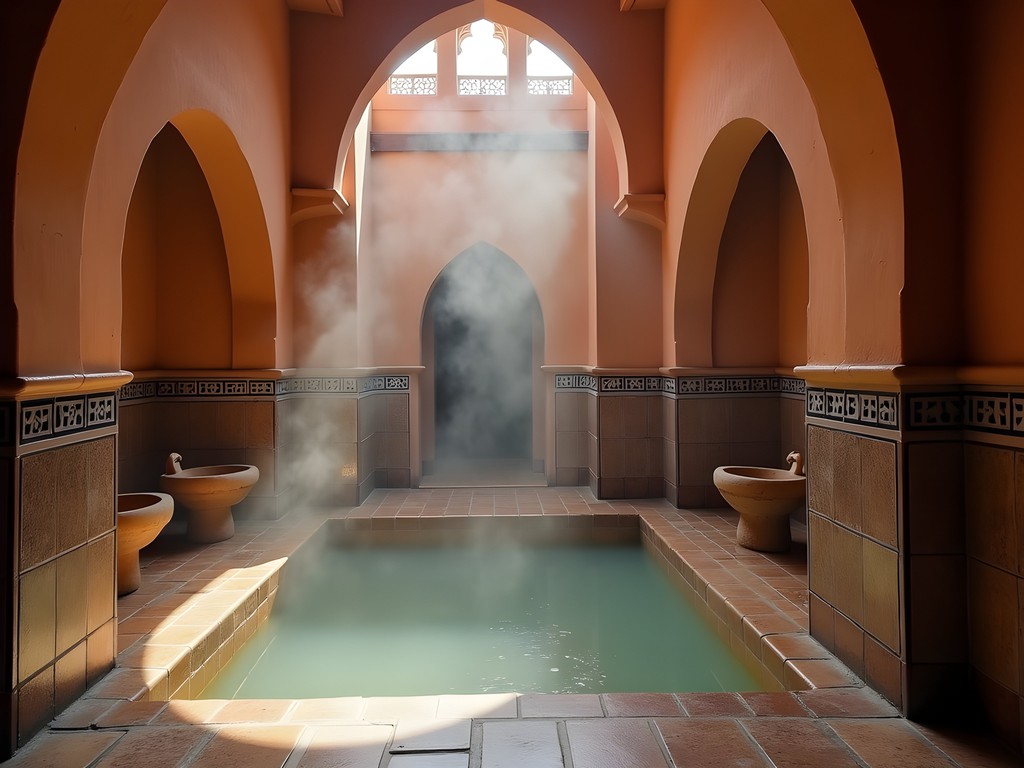
💡 Pro Tips
- Bring flip-flops, a small towel, and change of underwear – most traditional hammams provide minimal amenities
- Women should consider scheduling around local women's hours (often mornings) for the most authentic experience
- Hydrate well before and after – the intense heat and sweating can cause dehydration similar to what we monitor for in the ER
Final Thoughts
Marrakech rewards the methodical traveler who approaches the city as I would a complex medical case – with patience, research, and respect for established protocols. The 12 insider secrets I've shared aren't shortcuts but rather entry points to authentic experiences that reveal the city's true character. My approach to travel mirrors my medical practice: look beyond surface symptoms to understand underlying systems, respect traditional knowledge while applying analytical thinking, and recognize that the most valuable experiences often lie beyond initial discomfort. Whether you're practicing calligraphy with a master artist, navigating the souks using landmark-based wayfinding, or surrendering to the therapeutic rituals of a neighborhood hammam, the real Marrakech emerges when you step deliberately off the tourist circuit. I return to this magnificent city not for its Instagram-famous sites but for its capacity to continually challenge and recalibrate my perspectives – a form of preventative medicine for the soul that no prescription can match.
✨ Key Takeaways
- Navigate by landmarks rather than maps to discover hidden corners of the medina
- Choose family-owned riads in residential neighborhoods for authentic hospitality
- Participate in local traditions like hammams and cooking classes to form meaningful cultural connections
- Visit artisan workshops outside the main souks for quality crafts and meaningful exchanges
📋 Practical Information
Best Time to Visit
Fall (September-November) or Spring (March-May)
Budget Estimate
$50-75/day per person (excluding flights)
Recommended Duration
5-7 days
Difficulty Level
Moderate
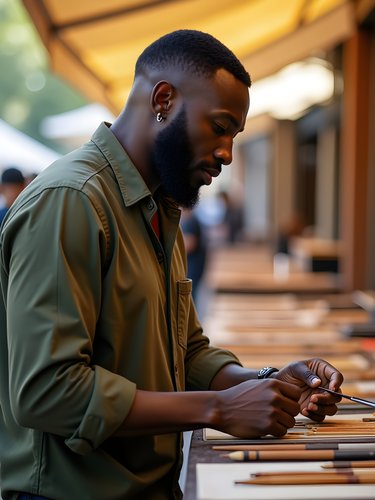
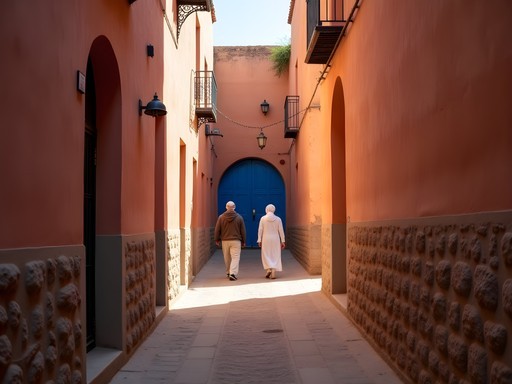
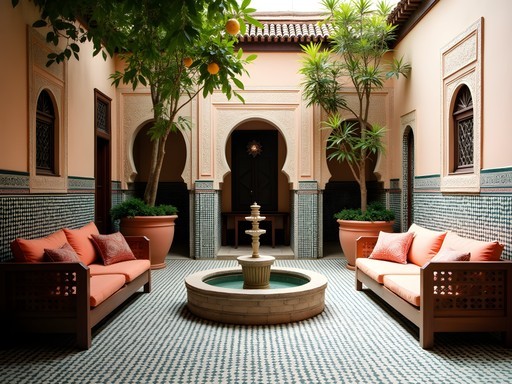

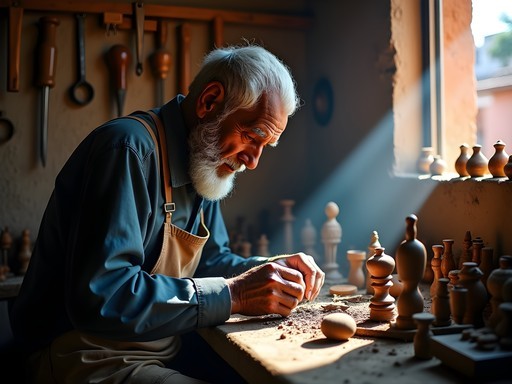
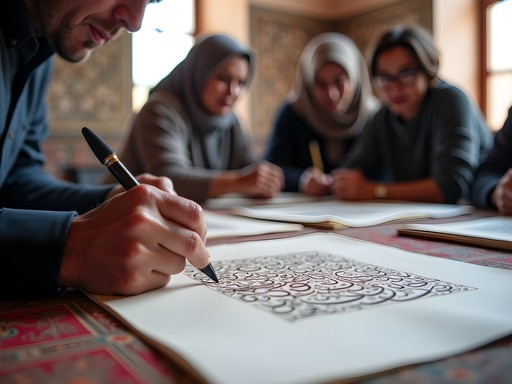



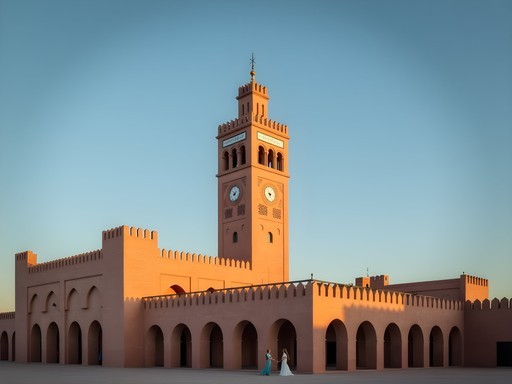







Comments
beachqueen
Great post! How safe is it for solo female travelers? I'm planning a trip but a bit nervous about navigating alone.
citymate
I went solo last year and felt fine! Just dress modestly, walk confidently, and don't be afraid to say a firm 'La, shukran' (no, thank you) to persistent vendors. The main medina areas are busy enough that I never felt unsafe during daylight.
beachqueen
That's reassuring, thanks! Did you use any particular riad that you'd recommend?
Gregory Boyd
Sean, your medical analogy is spot on! Marrakech demands both patience and strategy. I'd add that timing is everything - visiting the souks early morning (8-9am) before the crowds arrive gives you a completely different experience. The shopkeepers are setting up, you can actually see the craftsmanship happening, and the haggling is much more relaxed. Your 'Outlet Approach to Souks' section reminded me of my technique: I always head to Ensemble Artisanal first to establish fair fixed prices before hitting the main souks. Saves so much hassle and gives you a baseline for negotiations.
hikinghero
This is exactly what I needed! Heading to Marrakech next month and was worried about getting lost in the medina.
Gregory Boyd
The medina is designed to get lost in! That's half the fun. Just download an offline map and embrace the adventure.
hikinghero
Thanks for the tip! Any specific offline map app you'd recommend?
Gregory Boyd
I've had good luck with Maps.me for Marrakech. Make sure to download the Morocco map before you go!
freebuddy
Great post! You mentioned culinary immersion beyond tagine - can you elaborate on what street foods are actually safe for western stomachs? I've heard mixed advice about eating from stalls.
freegal
Not the author but I stuck to busy stalls where locals were eating and had zero issues. The fresh orange juice vendors are safe and AMAZING. Also the snail soup (weird but good) and msemen (pancakes) were highlights!
freebuddy
Thanks! Snail soup sounds... adventurous but I'm game! Did you try any specific stalls in Jemaa el-Fnaa?
Jean Wells
Look for stall #32 in Jemaa el-Fnaa - it's where local taxi drivers eat. That's always my metric for quality and safety. Their harira soup is exceptional, especially in early evening.
wanderseeker
Love the emergency room analogy! So accurate for how I felt my first day there. 😂
Jean Wells
Sean, your analytical approach to Marrakech resonates with my experiences there. As someone who's visited the city seven times over two decades, I've observed its evolution while maintaining its core chaos. Your medical metaphors are apt - Marrakech requires diagnostic patience. One additional tip for readers: the morning rhythm of the medina (6-8am) offers an entirely different experience. Watching shopkeepers set up, bread deliveries on bicycles, and the call to prayer echoing through empty alleyways provides context impossible to grasp during busy hours. Also, for those struggling with sensory overload, I recommend scheduling half-day trips to the Atlas foothills. The contrast between medina intensity and mountain serenity creates a balanced experience that prevents the common traveler burnout I observe in many visitors.
mountainwalker
Heading to Marrakech in October. Any specific riads you'd recommend that aren't just Instagram bait? Looking for authentic but still comfortable.
wanderseeker
Not the author but we stayed at Riad Berbere last year and it was amazing. Not the most photogenic but the hospitality was incredible and it's in a very local part of the medina. The owner helped us navigate the souks and even invited us to a family dinner!
mountainwalker
Thanks! Adding to my shortlist. Did you feel safe in that area?
wanderseeker
Totally safe. They arranged airport pickup which helped, since finding it the first time would've been tricky. After that, it was easy to navigate. I used offline maps to get around without data.
freegal
Just got back from Marrakech last week and wish I'd read this before going! Your tip about the "outlet approach" to souks is genius. We wasted our first day getting lost in tourist traps near Jemaa el-Fnaa. Finally found some amazing leather goods in the northern section of the medina where prices were literally half what they were asking in the main square. Also, the advice about eating where locals eat is spot on - best tangia we had was at a tiny place where we were the only tourists.
Jean Wells
The northern section is such a hidden gem! Did you make it to the metalworkers' district? It's where I found the most authentic artifacts without the markup.
freegal
No, missed that completely! Adding it to my list for next time. There WILL be a next time!
journeyclimber
Has anyone tried the outlet souk approach Sean mentions? Wondering if it really helps with getting better prices or just less hassle?
exploreguide
Just got back and YES it works! We found a leather shop near Bab Debbagh (the tannery area) and paid about 40% less than friends who bought similar items in the main souks. Plus the shopkeeper actually showed us how they make the items instead of just pushing for a sale.
moonace
Just booked my riad based on your advice! Going for one in the quieter northern medina area.
Venture X
Premium card with 2X miles, $300 travel credit, Priority Pass